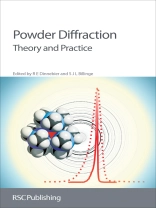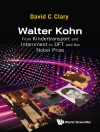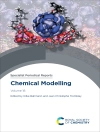Powder diffraction is a widely used scientific technique in the characterization of materials with broad application in materials science, chemistry, physics, geology, pharmacology and archaeology. Powder Diffraction: Theory and Practice provides an advanced introductory text about modern methods and applications of powder diffraction in research and industry. The authors begin with a brief overview of the basic theory of diffraction from crystals and powders. Data collection strategies are described including x-ray, neutron and electron diffraction setups using modern day apparatus including synchrotron sources. Data corrections, essential for quantitative analysis are covered before the authors conclude with a discussion of the analysis methods themselves. The information is presented in a way that facilitates understanding the information content of the data, as well as best practices for collecting and analyzing data for quantitative analysis. This long awaited book condenses the knowledge of renowned experts in the field into a single, authoritative, overview of the application of powder diffraction in modern materials research. The book contains essential theory and introductory material for students and researchers wishing to learn how to apply the frontier methods of powder diffraction
قائمة المحتويات
Chapter 1: Principles of Powder Diffraction; Chapter 2: Experimental Setups; Chapter 3: The Intensity of a Bragg Reflection; Chapter 4: General Data Reduction; Chapter 5: The Profile of a Bragg Reflection for Extracting Intensities; Chapter 6: Instrumental Contributions to the Line Profile in X-ray Powder Diffraction. Example of the Diffractometer with Bragg-Brentano Geometry; Chapter 7: Indexing and Space Group Determination; Chapter 8: Crystal Structure Determination; Chapter 9: Rietveld Refinement; Chapter 10: The Derivative Difference Minimization Method; Chapter 11: Quantitative Phase Analysis; Chapter 12: Microstructural Properties: Texture and Macrostress Effects; Chapter 13: Microstructural Properties: Lattice Defects and Domain Size Effects; Chapter 14: Two-dimensional Powder Diffraction using Area Detectors: The Experimental Setup; Chapter 15: Powder Diffraction at Non-ambient Conditions; Chapter 16: Local Structure from Total Scattering and Atomic Pair Distribution Function (PDF) Analysis; Chapter 17: Computer Software for Powder Diffraction












